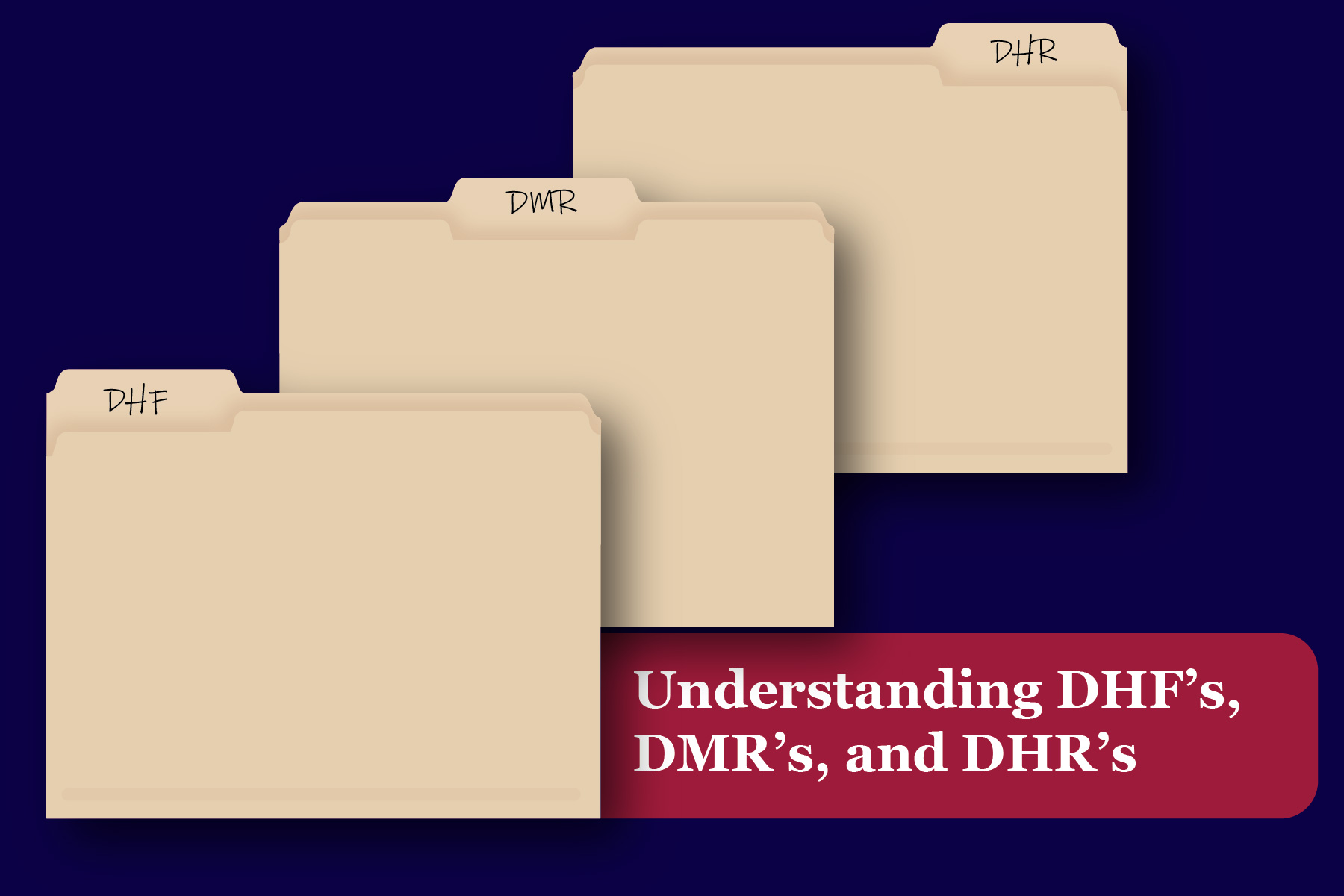If you are a part of the medical device industry, you are probably familiar with just how many “must know” acronyms exist. Three of the most important, and most often confused, acronyms are DHF, DMR, and DHR. The Design History File (DHF), Device Master Record (DMR), and Device History Record (DHR) are all distinct records that medical device firms must maintain as mandated by the FDA. Despite how similar they sound; they have three very different functions that support the design controls process.
Many seasoned experts will correlate developing medical devices to baking a cake to simplify the concept of these different types of records. If you were baking a cake, the DHF would hold all the records that demonstrate how you developed your cake recipe. Your DHF should maintain all the records that your device was developed per an approved design plan.1 The DHF should contain or reference documentation of design reviews, validation documentation, controlled design documents, and approved design inputs and output documents. 21 CFR 820.30 states that “each manufacturer shall establish and maintain a DHF for each type of device.” It is from your DHF that your DMR, and subsequently your DHR, will be developed.
If the DHF is how you developed your cake recipe, the Device Master Record (DMR) is the recipe. The FDA requires DMR’s for each type of medical device under 21 CFR 820.181. The DMR should contain all the information necessary to produce the device including device specifications, production process specifications, acceptance criteria, packaging/labeling specifications, and maintenance/servicing procedures.
Finally, the Device History Record (DHR) is the proof that you followed your recipe (i.e. your DMR). Under 21 CFR 820.184, the FDA mandates that each manufacturer shall establish DHR’s for each batch, lot, or unit produced. Your DHR should include the dates of manufacture, the quantity manufactured, the acceptance records of the devices manufactured, and the unique device identifier (UDI) or any other unique device labels.
Although the DHF, DMR, and DHR are all mandated by the FDA, ISO 13485:2016 combines the DHR and DMR into a concept known as the medical device file; it does not contain a requirement for the DHR. Thus, depending on the market you intend to sell your device in, these requirements may differ. If you need help understanding the design controls process and documentation for your device, EMMA International can help! Give us a call at 248-987-4497 or email info@emmainternational.com to get started.
1Liu, FDA (June 2014) Design Controls retrieved on 11/15/2020 from: https://www.fda.gov/media/89241/download






